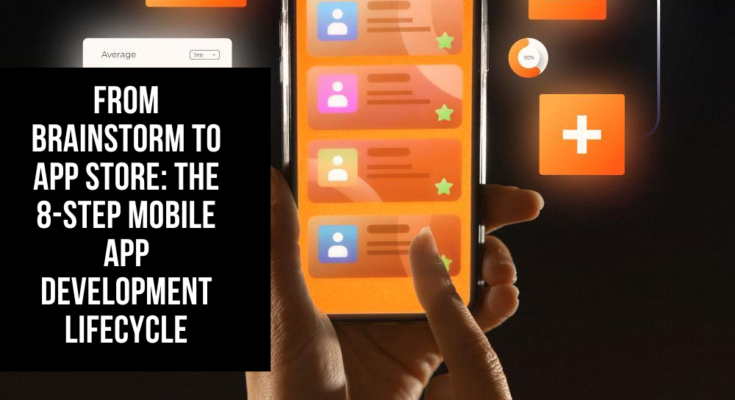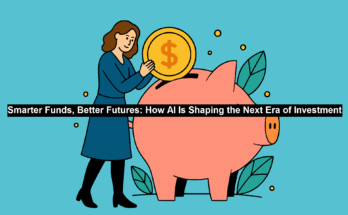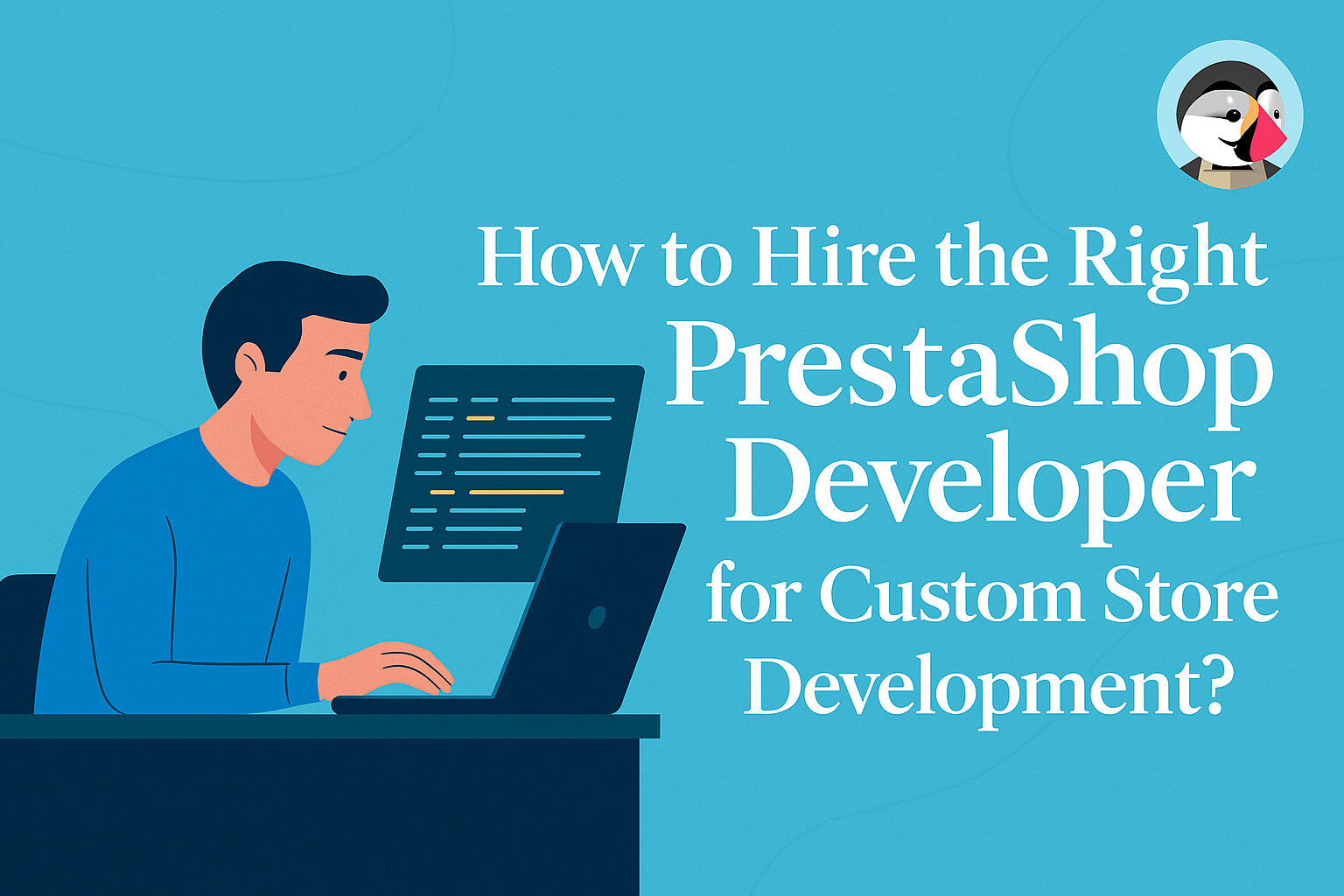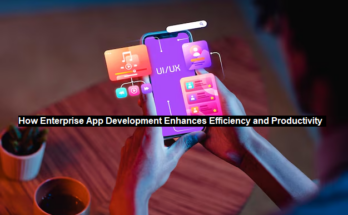The global runs on apps. From experience-hailing to social media, these virtual gear have turned out to be a simple part of our daily lives. But have you ever wondered how these apps grow to be? The adventure from a tremendous idea to a fully purposeful app on the App Store or Google Play includes a properly-defined process called the Mobile App Development Lifecycle (MADL).
Understanding the MADL equips you, whether or not you are an entrepreneur with a groundbreaking idea or someone curious approximately the tech international, with precious insights. Let’s delve into the 8 important steps that bring your mobile app dream to existence.
1. Ideation and Planning: Defining the App’s Purpose
Every successful app starts with a strong foundation – a clean concept that solves a hassle or fills an opening within the market. This preliminary level includes brainstorming periods to solidify the app’s reason, audience, and unique fee proposition.
Here are a few key questions to recall:
- What hassle are you seeking to clear up, or what need are you gratifying?
- Who is your target market? What are their demographics, ache factors, and tech behavior?
- What existing apps compete with your idea? How will yours stand out?
- What are the core functionalities your app will provide?
Market studies are important at this stage. Analyze competitor apps, perceive the ability a person wishes, and verify the market demand in your proposed answer. Conducting surveys, attention corporations, and competitor analysis helps refine your concept and ensure your app resonates with its intended customers. Shopify Development Services primarily focus on e-commerce platforms, and understanding the mobile app development lifecycle can be beneficial for businesses.
2. User interface (UI) and user experience (UX) layout: Crafting a continuing journey
As soon as the app’s core purpose is installation, it’s time to lay out the User interface (UI) and user experience(UX). The UI is essentially the app’s visible look, encompassing format, coloration schemes, fonts, and graphics. Here, the point of interest is to create an aesthetically captivating and intuitive interface that users can without problems navigate.
UX design delves deeper, focusing on how users will interact with the app. This level involves growing wireframes, which are low-constancy mockups that map out the app’s functionalities and display layouts. UI/UX design plays a critical role throughout the mobile app development lifecycle, influencing user engagement, satisfaction, and overall app success. User testing with prototypes facilitates the discovery of capability usability problems and guarantees a clean, User-centric enjoyment.
3. Defining the Technical Architecture: Choosing the Right Tools
With a clear vision of your app’s appearance and sense, it’s time to determine the technical building blocks. This involves:
Platform Selection: Will your app be native (developed in particular for iOS or Android) or cross-platform (built with the use of frameworks well matched with each structure)?
Backend Development: The “engine” at the back of your app, coping with data garage, server communication, and functionalities. Programming languages like Python, Java, or Kotlin are normally used.
API Integration: Will your app leverage third-party services like maps, social media logins, or charge gateways? Integrating APIs (Application Programming Interfaces) can enhance app capability.
Choosing the right era stack relies upon your app’s complexity, price range, and target platform.
4. Prototyping: Bringing the App to Life (Simpler Version)
A prototype is a fundamental, practical version of your app that allows for preliminary consumer checking out. It’s like a first draft, focusing on core functionalities rather than polished visuals. Here are some prototyping gear normally used:
Figma or Adobe XD: Cloud-primarily based tools for growing interactive prototypes with layout features.
InVision: Another famous prototyping tool providing design and animation abilities.
Protopie: A code-free prototyping tool that is perfect for fast iteration and testing. User feedback from checking out the prototype is useful. It enables identifying usability troubles, refining functionalities, and making sure the app is at the right music earlier than complete-fledged improvement starts.
5. Development: Building the App
This is where the magic occurs! With a properly described plan, selected technology, and a tested prototype, developers begin coding the app. This stage includes writing easy, green code to translate design mockups and functionalities right into working software.
Depending on the challenge’s complexity, improvement may involve:
- Front-End Development: Building the consumer interface using programming languages like Swift (iOS) or Kotlin (Android).
- Back-End Development: Creating the server-side common sense to deal with statistics storage, person authentication, and app functionalities.
- API Integration: Connecting the app to third-party services through the use of their APIs.
Version control structures like Git are critical for handling code adjustments, collaboration among developers, and easy rollback if wanted.
6. Testing and Quality Assurance: Ensuring a Flawless Experience
Once the app is developed, rigorous trying out is essential. This multi-layered system ensures the app functions as meant, is freed from insects, and gives you an ideal consumer revel.
Here are the main styles of testing concerned:
Unit Testing: Individual software additives are examined in isolation to confirm their characteristic efficiently.
Integration Testing: Ensures different modules in the app paint collectively seamlessly.
Functional Testing: Verifies the app’s functionalities match the designed specifications.
Usability Testing: Real users interact with the app to discover usability troubles and gauge their ordinary experience.
Performance Testing: Evaluate the app’s performance beneath diverse load conditions, ensuring easy operation.
Bug reporting tools and analytics systems are valuable property during trying out. They help perceive and tune troubles, analyze consumer behavior, and refine the app before release.
Read: What is the Importance of Data Privacy and Security?
7. Deployment and Launch: Releasing Your App to the World
With a sophisticated and carefully examined app, it’s time to unleash it at the app stores! here’s what this degree consists of:
App Save Optimization (ASO): Optimize your app list with relevant key terms, fascinating descriptions, and extraordinary screenshots to enhance discoverability in app shops.
Store Submission: Put together the app constant with app save recommendations, at the side of screenshots, app icons, privacy regulations, and age ratings. put up the app to the respective app shops (Apple App Shop and Google Play save). Staying abreast of trending technologies for mobile development is crucial for optimizing the mobile app development lifecycle and delivering innovative, user-centric applications.
Launch strategy: Expand a launch method encompassing advertising and marketing campaigns, person acquisition plans, and potential media outreach to generate pre-release buzz and electricity downloads upon launch.
Remember: Launching the app isn’t the give up of the adventure. Continuously reveal the app’s overall performance, examine user remarks, and address any insects or troubles that arise.
8. Maintenance and Updates: Keeping Your App Thriving
A successful app requires ongoing protection and updates. Here’s what to bear in mind:
Bug Fixes: Address any insects or crashes stated by using customers to keep a clean person revel in.
New Features and Updates: Introduce new functionalities primarily based on user remarks and marketplace developments to keep your app relevant and attractive.
Performance Optimization: Regularly monitor and optimize the app’s overall performance to ensure efficient operation throughout exceptional gadgets and network conditions.
Security Updates: Implement regular security updates to address capability vulnerabilities and protect personal facts.
By prioritizing ongoing upkeep and updates, you may make sure your app remains competitive, and applicable, and maintains to pleasure its users.
In conclusion
The Mobile App Development Lifecycle is a complete roadmap that takes your app idea from concept to a thriving mobile application. By understanding and following those eight vital steps, you may boost your probability of achievement within the ever-evolving mobile app landscape.




